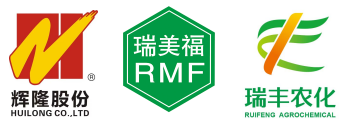Seminar on Patent Term Extension for Plant Protection Products and Bolar Exemption Held in Singapore
Seminar on Patent Term Extension for Plant Protection Products and Bolar Exemption Held in Singapore
Syngenta AG SwitzerlandFollow
SwitzerlandFollow
# Soil Nitrogen Fixation 2024 #
Creating the right IP ecosystem for agriculture is key for sustainable and secure food production which is much needed today. The critical balance of IP protection and right to access needs consideration.
-How are regions navigating these issues and what are best practices that we can learn from and adopt?
-What is the continuing role of patents in this space?
-What type of national legislation is optimal to support this delicate ecosystem?
Under the title ″Unleashing innovation for sustainable and secure food production″, a seminar in Singapore was held on April 30th to reinvigorate the discussion around which IP ecosystem would best support technological innovation globally, and more specifically in China, in the area of sustainable and secure food production. A balance must be struck between the incentives for the innovators and on the other hand the access to the innovated technology to competition.

Technology that plays an important role in agriculture is crop protection technology. Companies are investing a lot of money in R & D to discover and develop new Plant Protection Products, which require a development time of on average 12 years. These new products are protected by patents all over the world. However, patents have a limited lifetime. On the other hand, the acquiring of the necessary test data to build the regulatory dossier and the regulatory review by the authorities is taking ever longer. Hence, innovators wanting to benefit from the patent exclusivity have less time to recuperate their investments. To address this imbalance, many countries have implemented various systems to prolong the exclusivity period to compensate for the time ″lost″ due to regulatory review.
The government of the People’s Republic of China has always promoted technology in agriculture and more recently the government’s objective is to focus on technological innovation in this area as well. China not only is an important market for innovative plant production products, but China is also the country where the majority of the manufacturing of active ingredients is done. Consequently, the patent situation in China is not only important for the domestic Chinese market, it is important for the global market. Given the government’s recent focus on innovation, it seems the right time to see whether the Chinese IP ecosystem (and consequently the supporting legislation) can be optimized to allow for accelerated innovation in plant protection R&D.
Before proposing changes to the legislation, it is good to understand what other countries have done and learn from it. Therefore, this international seminar, attended by many different innovator companies was organized in Singapore with the objective to explain existing systems of patent term extensions. Furthermore, the specific question of whether doing regulatory trials to complete a generic regulatory dossier was considered an infringement or not in different countries. The legislation in the following jurisdictions were discussed.
Audrey Yap of the law firm Yusarn Audrey in Singapore received an international audience and introduced the seminar to the importance of sustainable and secure food production in today’s world. Furthermore, she emphasized the crucial role of technological innovation.
Toni-Junell Herbert of the US law firm Baker-Hostetler explained the history of the Orange Book system in the USA, the Hatch-Waxman legislation that introduced the Patent Term Extension and the safe harbor for doing regulatory trials (the Bolar exemption). This set-up is only available for pharmaceuticals in the United States.
Achim Krebs of the European IP firm HGF explained the Supplementary Protection Certificate (SPC for short), which is available for both pharmaceuticals and plant protection products in the European Union. It is a relatively straightforward system allowing for up to 5 years of patent-like extension.
Ian Goh of the Singaporean law firm Yusarn Audrey in Singapore emphasized how the patent term extension was introduced by the Singaporean government to stimulate pharmaceutical presence in Singapore. He demonstrated the success of the initiative of this legislative measure by referring to the increased production in Singapore of pharmaceuticals.
Eduardo Hallak of the Brazilian law firm Licks, touched upon the Japanese patent term extension system and explained that interested circles in Brazil are looking into different systems of patent term extension since the Supreme Court in Brazil changed the patent term from 10 years from grant to 20 years from filing in Brazil.
Juhua Luo of the Chinese law firm CCPIT, elaborated on the patent linkage system and Patent Term Extension that was made available for pharmaceuticals in China, recognizing the need for patent term extension for products experiencing delays in getting to the market because of a required regulatory review. And indeed – as in the USA – the legislation introduced a so-called Bolar exemption as part of the system.
Christopher Shaowei of the Chinese law firm gave an overview of the existing case law on the question whether doing preparatory work for to obtain generic regulatory approval was to be considered as patent infringement. He emphasized that the patent linkage, the patent term extension as well as the so-called Bolar exemptions are intrinsically linked.
The seminar also welcomed Dr Tan Lee Kim, Director General, Deputy Chief Executive of the Singapore Food Agency. Dr Tan shared her insights on the future of food and the importance of technology on that journey. She showed how Singapore is really forward looking in the important public debate concerning sustainable and secure food production.
The panel discussion, hosted by Filip De Corte, Head IP Crop Protection at Syngenta,was particularly enlightening—an open exchange of ideas that prompted us to rethink and examine the overall environment for developing plant protection products. It's clear that all systems are continuously adjusting to adapt to the changing global innovation landscape. An ideal system should incorporate the advantages of various frameworks, providing sufficient incentives for innovation while ensuring market competition and technological accessibility, ultimately supporting sustainable global food production systems.
Source: AgroNews








